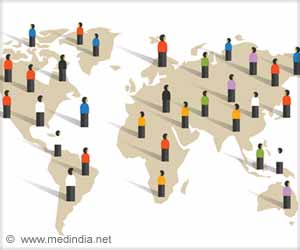Five times greater than in 1990, the new record of Global health funding hit an all time high of $31.3 billion in 2013.

The findings will be presented today by IHME Director and report co-author Dr. Christopher Murray at the Center for Strategic and International Studies (CSIS). The results will be published online in Health Affairs and in the fifth annual edition of IHME's health funding series, Financing Global Health 2013: Transition in an Age of Austerity.
The findings will also be available in a new online data visualization tool, and the data from the study will be available on IHME's website at healthdata.org.
In addition to providing a detailed picture of donors' global health spending, the report tracks development assistance for different health issues up to 2011, the most recent year data are available. IHME found that funding for maternal, newborn, and child health increased by nearly 18% between 2010 and 2011, reaching $6.1 billion.
"Donors' continued support for increased spending on maternal, newborn, and child health reflects the global sense of urgency to meet the Millennium Development Goals by 2015," Dr. Murray said.
For the first time, IHME measured health funding for tobacco control, which totaled $68 million in 2011. In comparison, funding for HIV/AIDS, the health issue receiving the most funding in 2011, was 113 times as large as funding for tobacco control.
Advertisement
"The Global Burden of Disease shows steady growth in the burden of non-communicable diseases in all regions except sub-Saharan Africa," said study co-author Dr. Joseph Dieleman, who leads health financing research at IHME. "There is relatively little development assistance for health in these countries for NCD-related programs."
Advertisement
For NCDs, the funding per year of healthy life lost was much smaller, less than 50 cents in South Asia from 2006 to 2010, and just over $2 in Latin America and the Caribbean.
Even though much of the global health community's attention is focused on development assistance for health, IHME researchers found that developing countries on average spend 20 times more of their own resources on health than they receive in assistance. Excluding donor assistance, government health expenditure amounted to $613.5 billion in 2011. This spending grew 7.2% between 2010 and 2011.
In most countries, donor funding made up less than 10% of total government spending on health. In certain Asian and sub-Saharan African countries, however, development assistance for health accounted for more than half of total government health spending.
Source-Eurekalert









